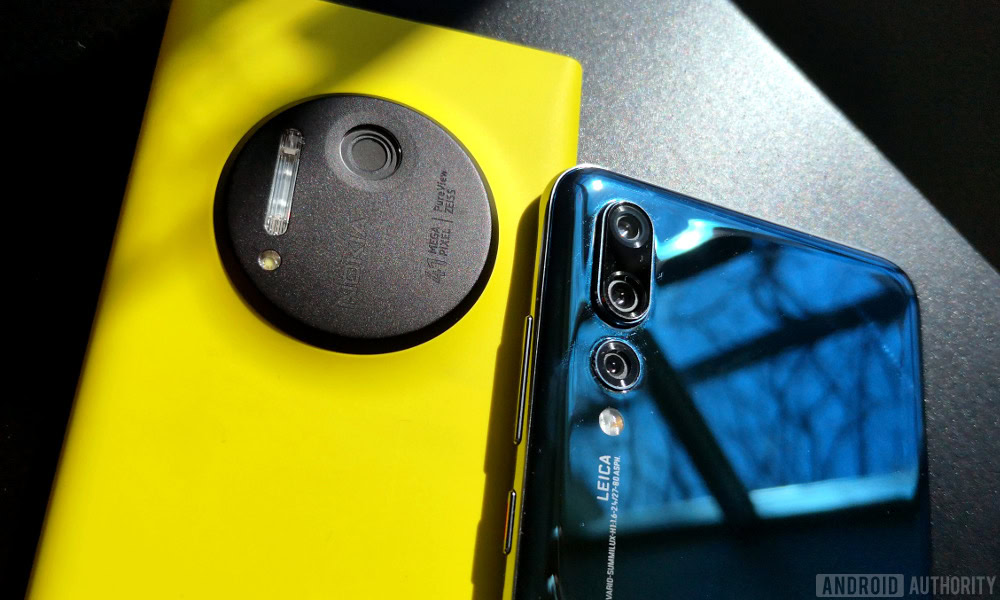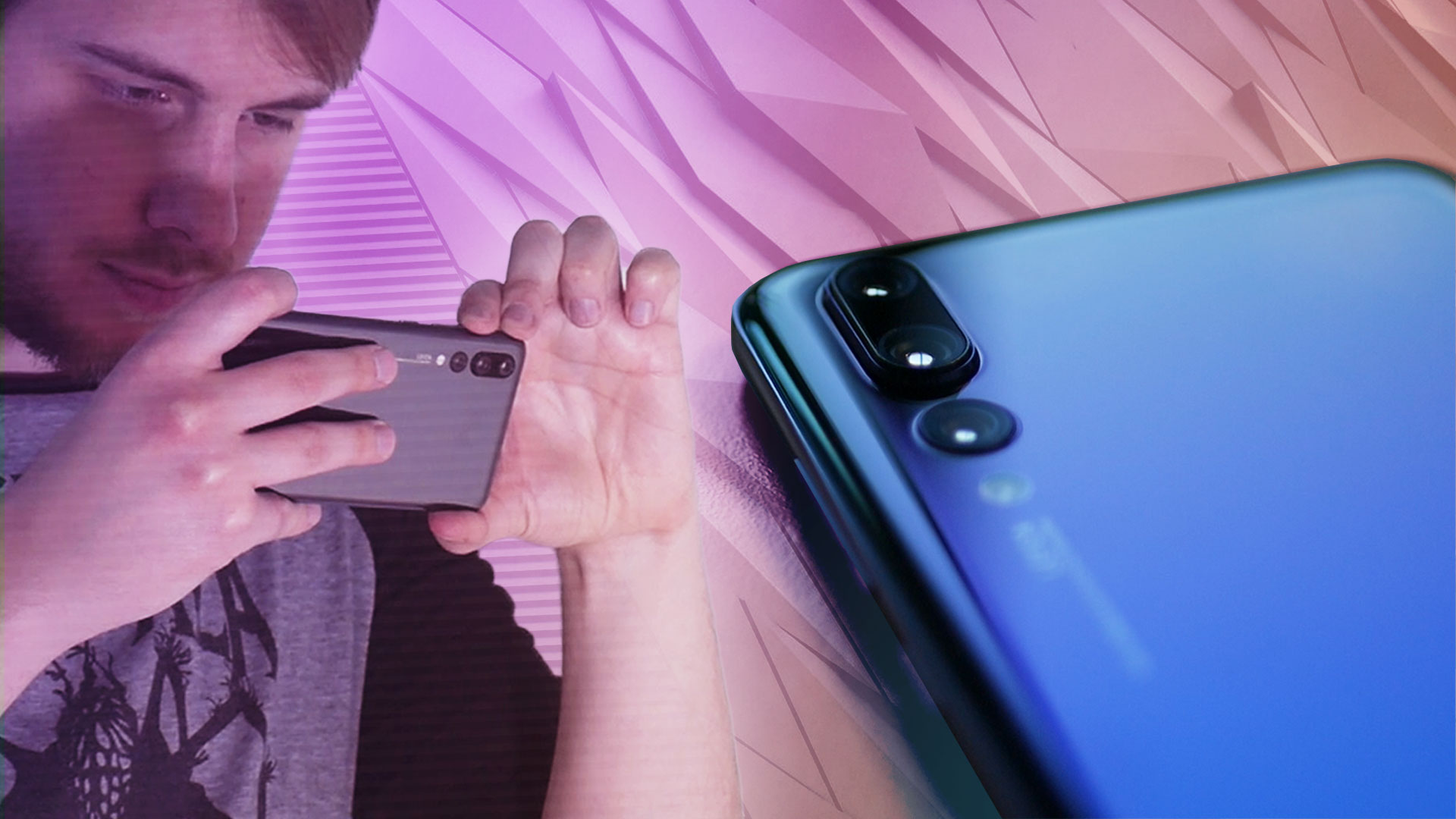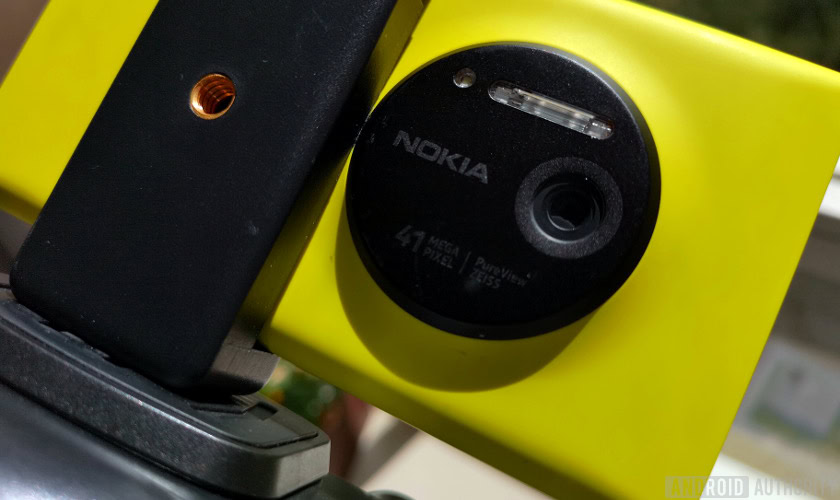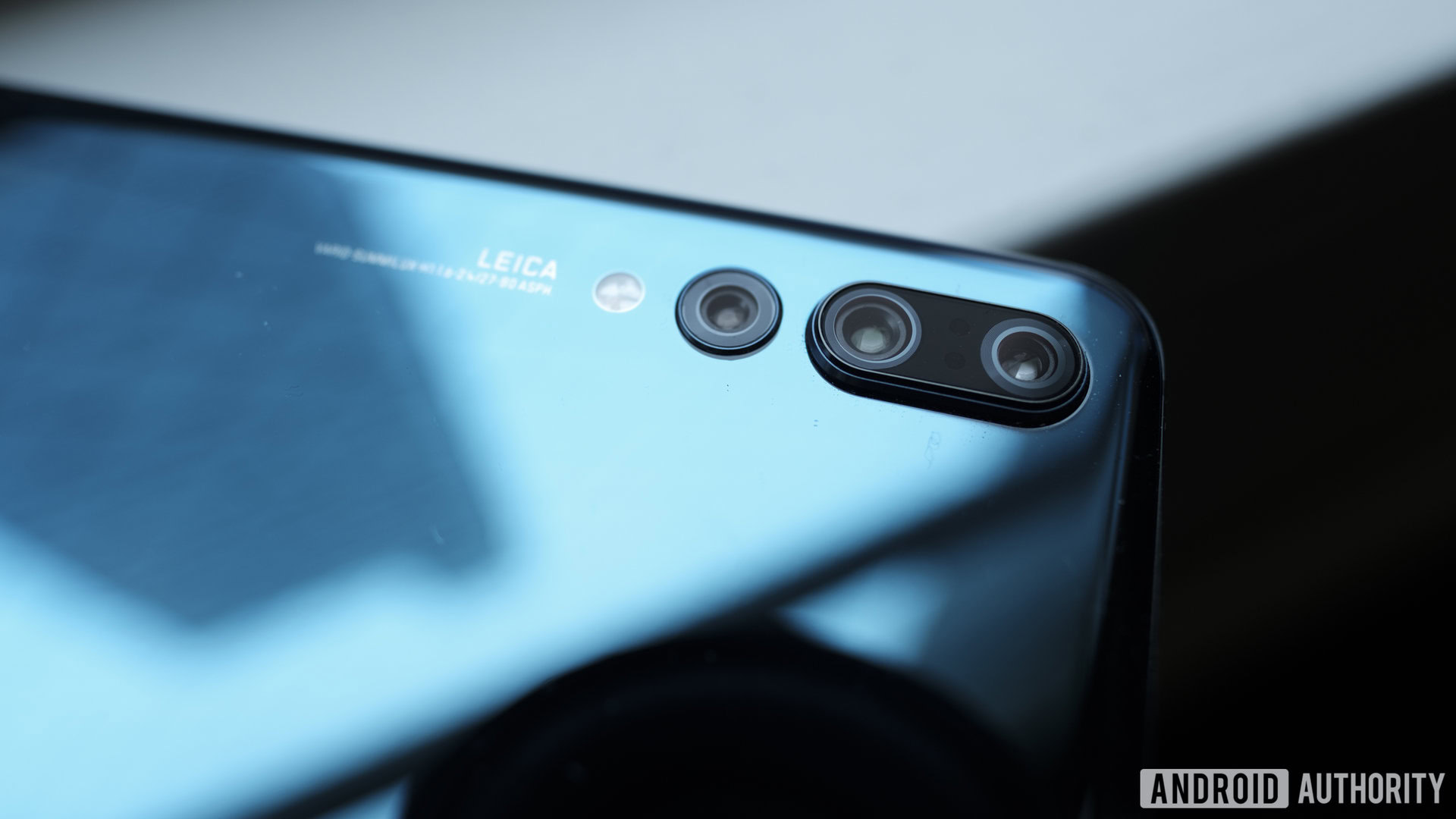Affiliate links on Android Authority may earn us a commission. Learn more.
40 megapixel shootout: HUAWEI P20 Pro vs Lumia 1020
Published onMay 1, 2018

Consensus has long held that, when it comes to photography, more megapixels is not always better. Quality over quantity, as they say. Yet in 2018, an industry-leading smartphone shooter boasts a 40 megapixel camera — the HUAWEI P20 Pro. A long-running fan favorite, regarded as one of the best phone cameras ever built also houses a 41 megapixel sensor — the Nokia Lumia 1020.
Today we’re pitting the HUAWEI P20 Pro vs Lumia 1020 to see just how far smartphone photography has come since 2013. Brace your data allowance, there are a lot of pictures coming down the pipe.
Technology compared
Before diving into the pictures, let’s take a look at what makes these two phone cameras so special.
The Lumia 1020 boasts a 41 megapixel rear sensor (image output is cropped to 38MP) complete with an in-house optical image stabilization (OIS) technology. At 1.5 inches, the sensor was much larger than other smartphone sensors at the time, allowing it to capture more light for improved image quality.
The Lumia’s software oversamples the high-resolution picture down to 5MP, providing you with photos for your library and for sharing. This technology is also used for the 1020’s lossless zoom, which ranges from the full 38MP 1X frame down to a cropped 5MP image at 2.7X.
The handset includes a “pro camera” option, which gives users control over ISO, exposure, shutter speed, and many other options we’re quite familiar with in modern flagships. The Lumia 1020’s setup is surprisingly simple, but it houses all of the key ingredients to take good-looking pictures.

The HUAWEI P20 Pro is a far more complicated beast, boasting three cameras — a main 40MP sensor, a monochrome 20MP sensor, and an 8MP telephoto lens to assist with zoom at 3X and beyond. The 40MP main sensor doesn’t feature OIS, instead using a software-based alternative. The camera uses pixel binning to combine data from four 1µm pixels into a single larger 2µm pixel to create a 10 megapixel image that should theoretically capture more light and therefore produce less noise-prone pictures.
| Main camera specs | Lumia 1020 | HUAWEI P20 Pro |
|---|---|---|
| Main camera specs Megapixels | Lumia 1020 41MP | HUAWEI P20 Pro 40MP |
| Main camera specs Sensor size | Lumia 1020 1/1.5 inches | HUAWEI P20 Pro 1/1.7 inches |
| Main camera specs Pixel Size | Lumia 1020 1.12µm | HUAWEI P20 Pro 1.0µm |
| Main camera specs Aperture | Lumia 1020 f/2.2 | HUAWEI P20 Pro f/1.8 |
| Main camera specs Focal length | Lumia 1020 26mm | HUAWEI P20 Pro 27mm |
| Main camera specs Stablization | Lumia 1020 OIS | HUAWEI P20 Pro Software |
| Main camera specs Zoom | Lumia 1020 Lossless | HUAWEI P20 Pro Hybrid |
Side by side, it’s a tossup between the two handsets. The HUAWEI P20 Pro’s 1/1.7-inch sensor isn’t quite as large as the Lumia’s 1/1.5-inch sensor, and its 1µm pixel pitch is also smaller than the Lumia’s 1.12µm. However the handset does have the wider f/1.8 aperture (versus f/2.2), that means the P20 Pro has better light capture potential to offset its smaller pixel size. It’s going to be a close call.

The camera shootout
For the shootout, we looked at four particular areas. First, we compared detail capture from the 40 and 41 megapixel sensors to see which makes the most out of this super high resolution. Then we moved on to low light performance, to compare how the huge pixel count affects noise and detail when light is limited. Third, we examined how HUAWEI’s pixel-binning capabilities stack up against Nokia’s oversampling. Finally, we compared Nokia’s lossless zoom technology to HUAWEI’s Hybrid Zoom feature.
All of the pictures are captured using the default camera modes, leaving the automatic software to handle ISO, shutter speed, and all that — barring the one or two instances where it’s otherwise stated. The images in the article are crops, so I encourage you to check out the full-scale samples at the link below.
More megapixels mean more detail
Since both cameras can shoot with more megapixels than any other smartphone, we’re going to start with a long-range shot to see just how much detail is on offer with this high-resolution photography.
The 100 percent crop of a distant building allows us to compare which phone can pick out brickwork and other fine details at a distance. The HUAWEI P20 Pro does a better job in this regard, offering superior definition and shadowing of the bricks, highlights on the tree leaves, and a much more accurate white point. The Lumia’s presentation is noisier both in the sky and looking at the tree texture. There’s minimal shadowing detecting on the brickwork, and less depth and definition overall. The Lumia’s orange off-color white balance was common in many of the other outdoor shots I took too. It’s likely due to the other content in the uncropped image.
This isn’t a slam dunk for the P20 Pro though. Looking at the roof, there are some obvious color artifacts, possibly as a result of oversharpening or, perhaps more worryingly, problems with the sensor or electronic noise. Either way, this appears to be a side effect of the camera’s ability to pick out more highlight detail than the Lumia.
In this flower close up the color balance is much closer between the two, making it easier to focus on the differences in detail and sharpness. The P20 Pro’s image picks out finer details on the petals and again boasts more pronounced highlights and shadows. HUAWEI’s sharpening algorithm hardens the edges, producing a somewhat pixelated look on the green leaves. Meanwhile, the Lumia 1020 presents a much softer image with some noticeable noise and blotchy color, which is particularly bad when looking at the center of the rose.
Pixel for pixel, it's the P20 Pro that captures the most detail.
The Lumia 1020’s sensor can really shine in the right environments, when the software gets the settings just right. Extracting detail from the 41MP sensor that matches or beats the P20 Pro is as much luck as it is trial and error.
In the above picture, the 1020 again tints the picture slightly warmer than the P20 Pro, but it’s a better fit for the sunlight in this instance. This time though, the 1020’s shadows provide the correct depth. The absence of excessive P20 Pro sharpening makes the two much tougher to tell apart. Out of all the outdoor shots I took, this is pretty much the only one where the differences are so marginal.
When cramming such a high megapixel count into a smartphone-sized sensor, the risk of noise from crosstalk, electronic circuits, and other sources increases greatly, even in well-lit shots. The P20 Pro surprisingly beats out the larger pixels of the Lumia, showcasing a combination of technological improvements and the company’s denoising algorithm. Looking at the sky in the same bright outdoor shot highlights the differences between the two — the P20 Pro is much cleaner. Noise is an issue that will pop up a few times going forward.
Low light performance
For this low light picture, I wanted to show the whole image first to present an overview of the exposure and colors. The Lumia 1020 overexposes the candlelight a little, but this provides a brighter and more colorful presentation across the rest of the picture. The HUAWEI P20 Pro takes the opposite approach, avoiding overexposure on the bright light source but ending up a tad darker overall. At this distance, both hand in good-looking results, given the very weak light source.
Peeping in at the 100 percent crop reveals a very different story. The Lumia 1020 is very noisy and struggles with finer details, while the P20 Pro exhibits surprisingly little noise given the lack of light. As a side note, the Lumia’s automatic settings opted for an 800 ISO and 1/9 second shutter for this picture. The P20 Pro performed better with a lower 640 ISO and faster 1/20 second shutter, hence the cleaner picture.
However, we again see HUAWEI’s more aggressive de-noise and sharpening algorithms come into play, which produce some unsightly hard edges and a more pixilated look around our Android figurine.
Pixel binning vs oversampling
Unlike the Lumia 1020, HUAWEI’s handset doesn’t default to the 40MP mode out of the box. Instead, 10 megapixels is the standard resolution and is also what’s used for the handset’s other shooting features, like Hybrid Zoom and Night Shots. For the same reason Nokia included an automatic 5MP image with every snap, these file sizes are much more share-friendly too. This conveniently also lets us compare how HUAWEI’s pixel binning technology stacks up against the Lumia’s oversampling technology when shrinking images down. Theoretically, switching to 10 megapixels should improve the low light performance of the P20 Pro, because the larger pixels are able to capture more light.
Related: HUAWEI P20 Pro: Taking a photo in complete darkness
The P20 Pro’s straight 10MP shot does a better job picking out fine details than the Lumia’s 40MP-to-5MP oversampling in this instance. Look closely at the text and grooves on the cartridges.
I should also note it took four shots for the Lumia to stop massively overexposing the image, due to the high contrast between the grey subject and black background. The Lumia also oversaturated the colors, which is a problem for the high contrast, red-on-black text. However, once you step back from the 100 percent crop, the differences are barely noticeable.
This far more difficult overcast outdoor shot shows a much bigger gap between the two. To see how the sensors handle exposure and dynamic range, we picked the clouds above the red tree as our focal point which revealed how much darker foreground detail the two cameras can preserve.
The Lumia’s image is still very soft but the camera did a very good job capturing the shape of the distant leaves even at 5 megapixels, thanks to the oversampling. The P20 Pro offers much more striking highlights but the sharpening overpowers the distant details, resulting in a harsher look. Interestingly enough, taking this picture at 40MP on the P20 Pro removes the oversharpening effect and produces a picture much closer to the Lumia 1020.
The roles reverse when examining the closer details of the tree trunk. The Lumia washed out almost all of the finer grooves and color differences in the bark, while the P20 Pro’s 10 megapixel resolution picked them out without issue. The reason for these differences comes back to the debate about pixel count versus pixel size. Larger pixels capture more light and suffer from less noise, so they tend to make the most of their resolution and dynamic range. Meanwhile higher pixel counts allow for better detail capture in theory, but have to contend with optimizing around the lighting conditions. The P20 Pro’s monochrome sensor also boosts the dynamic range of its pictures, no doubt helping here.
The P20 Pro relies heavily on oversharpening in its 10MP mode, but its detail capture is a match for Nokia's oversampling.
The next shots are in low light. To compare the pixel-binning effect, We switched the P20 Pro over to manual camera mode to lock in the ISO and shutter speed settings between the 40MP and 10MP shots. We’re also comparing the Lumia 1020’s 38MP to 5MP sample to see if the oversampling algorithm has any effect on low light performance. Before delving in, note that both phones did an excellent job at exposing the picture, making the environment appear much brighter than it actually was.
Nokia’s old Lumia 1020 is a little noisy, as is typical in low light, but overall does a surprisingly good job capturing the finer details. There’s absolutely no difference between the 38 and 5 megapixel images, however, reaffirming that this rescaling takes place entirely in post and doesn’t improve image quality or low light performance.
The pixel-binning technology in the HUAWEI P20 Pro’s 40MP main camera shows a notable improvement to low light performance. The regular 40MP shot is the noisiest of the bunch and lacks a lot of detail across the vinyl cover. Switching to the 10MP mode (enabling pixel binning), the vast majority of the noise disappears and there is a notable jump in the amount of detail captured. The 10MP pixel-binned shot is the best looking of these snaps by a wide margin, proving HUAWEI’s technology isn’t just a marketing gimmick.
Pixel binning greatly improves the P20 Pro's performance in low light shots.
Lossless vs Hybrid Zoom

Finally, we come to zoom technology. Both companies boast their technologies achieve better-than-digital zoom. The Lumia 1020 deploys a lossless cropping technique down to 5 megapixels. HUAWEI uses its in-house Hybrid Zoom technology, which I heavily suspect uses a form of super resolution processing to enhance the image and sidestep the pitfalls of the dreaded digital zoom. For whatever reason, HUAWEI doesn’t allow zooming with the 40MP image in its camera app, but you can achieve the same results by manually cropping in post.
Hybrid Zoom only works in the P20 Pro’s 10MP mode, so we switched over to that setting for this section. Given the HUAWEI P20 Pro’s megapixel advantage when zooming (10MP vs 5MP), we also don’t have to zoom in as far to capture the same frame as the Lumia for our 100 percent crop.
The earlier themes are echoed once we start zooming in. The Lumia 1020’s 5MP zoom is a match for cropping in on its 38MP image, confirming that this is a lossless zoom. As a result, the image is clean from noise and scaling artifacts associated with more common smartphone digital zoom. It looks great, even if the overall presentation is still rather soft.
The P20 Pro’s Hybrid Zoom is even better, offering up a wider dynamic range with superior highlights and shadowing, and a notably sharper overall image. You can see a white halo (a typical sharpening artifact) around the leaves in the upper left of the image. Given that this is a software-based zoom (the 3X telephoto lens isn’t used at this zoom level) from a 10MP image, the detail capture is quite astounding, even if the sharpening might be rather excessive. Many of the blemishes and discoloration on the old brickwork glossed over by the Lumia is well distinguished with the Pro’s Hybrid Zoom.
The Lumia's lossless zoom is very good, but HUAWEI's Hybrid Zoom offers much more detail and range.
There is a night and day difference between the two in this closer range shot too. The Lumia 1020’s image is just as noisy and blotchy as the earlier 38MP 100 percent crop, as you would expect. HUAWEI’s Hybrid Zoom technology is not only a lot cleaner, but it also picks out a lot more detail — without he oversharpening problems of the earlier image.
Worse for the Lumia, the HUAWEI P20 Pro’s zoom can go much further, hitting its own 2.7X hybrid zoom and then leaping up in quality once the telephoto lens kicks in at 3X and beyond. These last two shots are just from the P20 Pro, but demonstrates the bump in quality that the Pro has to offer once the telephoto lens kicks in that I felt compelled to include it for completeness.
And the winner is …
The Lumia 1020 had a lot more trouble with exposure than the P20 Pro. In high contrast scenes and overcast outdoor pictures, the Lumia 1020 would often struggle with blown-out highlights, taking multiple shots and some trial and error to get the right balance. This was problematic with four-second shutter times for each picture — by the time we’d hit the right exposure the outdoor lighting conditions had changed, making a number of outdoor pictures I took useless for a comparison.
Shooting with the HUAWEI P20 Pro is simply a better experience. It’s faster, spends less time struggling with exposure, and has plenty more options to experiment with, which we haven’t even touched on here.
On the whole, the P20 Pro takes better 40MP pictures too. Outdoor white balance is far more realistic and the detail captured at range is almost always superior. It suffers from less noise, and its dynamic range is notably better too. Low light is a closer tossup, depending on the lighting type, but switch to the P20 Pro’s 10MP pixel-binned option and it emerges as the clear winner.
The P20 Pro's triple camera setup is convoluted and tricky to master but produces the better results.
Huawei’s Hybrid Zoom technology also surprisingly trounces the Lumia’s lossless zoom capabilities, picking out far more detail at similar zoom levels, and extending up to 5X with its combination of software and telephoto hardware. The triple camera configuration isn’t perfect though. Sometimes a cropped 40MP shot produces a better zoom than the hybrid software, particularly for landscapes. The telephoto also lens isn’t always engaged in lower light, resulting in highly variable zoom quality. Credit to the Lumia 1020 in this regard, it’s much more predictable and streamlined due to its powerful single sensor setup.
There’s little doubt the HUAWEI P20 Pro takes the better pictures, as we would hope given five years of technological iteration, but you do have to pixel peep to make out many of the advantages and the sharpening isn’t going to be to everyone’s tastes. The Lumia 1020’s 41MP sensor was well ahead of its time — it doesn’t even look bad by today’s standards — but the P20 Pro really shows off what can be accomplished if you want flexible, high-resolution photography in your pocket.